Games People (in this case, Polar Research Wannabes) Play
As I mentioned before in a prior blog entry, PolarTREC is an exceptional professional development program for teachers. But exactly why did I decide to apply to the program? It wasn’t a personal fulfillment of a bucket list item. Nor was it the thought of an extraordinary vacation destination. Believe me, if you knew the volume of assignments from 140 students over a three week period that are awaiting me upon my return, you should know it will be anything BUT a vacation. Rather, the reason I decided to apply to PolarTREC was my students. I am always looking for unique opportunities to engage my students in topics directly relevant and uniquely applicable to the curriculum I am teaching. In addition, this program afforded me the platform to reach out to other teachers in search of collaborative efforts between our classes and our students. PolarTREC represents one such opportunity. Ever since I found out that I was accepted into the 2017-2018 PolarTREC cohort of teachers, I have been constantly thinking about instructional ideas for such activities and projects. I would like to describe one such effort in this blog entry – an activity – that was completed prior to my expedition. In addition, I am currently working on a math-related lesson, an engineering-based project, and an art-based activity that should be ready for classroom implementation once I return to the classroom. These endeavors will be reported on as well, as they are completed.
2017 Polar-ympics
At the beginning of the school year when I first informed my students that I would be on my way to Antarctica later in the semester, I was asked a multitude of different questions but the one question that was posed most frequently was, “What will you be wearing?” Instead of telling them, I thought I would show them in a class activity entitled, Polar-ympics. In order for this activity to work as I envisioned, I would need two Extreme Cold Weather (ECW(abbreviation) Extreme Cold Weather clothing) gear packs. All PolarTREC teachers were aware that one gear pack was always available for loan from ARCUS but asking for two kits seemed unlikely because of the rare availability of two kits at any one time. However, it turned out I was in luck. I completed the required paperwork and two ECW(abbreviation) Extreme Cold Weather clothing gear packs would soon grace my classroom. So, what exactly was my plan for the two gear packs? As the name Polar-ympics implies, a competition is involved between two students who would compete in four events that might be a common occurrence to a typical polar researcher. Two students were chosen, briefed on the parameters and rules of each event, and the games of the 2017 Polar-ympiad were officially underway.
The first event of the competition was Speed Dressing. I began by filling in my students on the reality of research on the ice. Flights out to the field from home base are highly contingent upon weather condition and can be scrapped at a moment’s notice. Thus, when the conditions present themselves as favorable and transportation to the field is a go, it is vitally important that the researchers be ready to go as soon as possible, with strong emphasis on the word soon. Each student would be presented with an ECW(abbreviation) Extreme Cold Weather clothing gear pack and at the sound of the signal, get dressed in full gear in the shortest amount of time. To prepare them for this event, I did show them a picture of a fully dressed individual equipped for a polar expedition and then opened one of the bags to show them what the clothes/gear looked like and how it was properly worn. This is only fair because each scientist headed out to the field in Antarctica makes a stop in Christchurch where they are allowed to try on each of the items in the ECW(abbreviation) Extreme Cold Weather clothing gear pack.
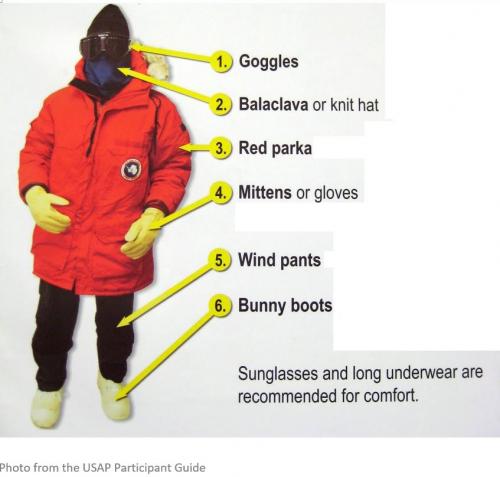
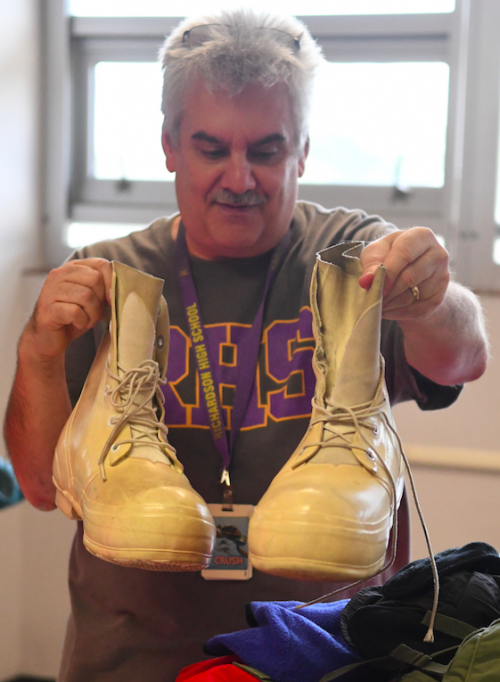
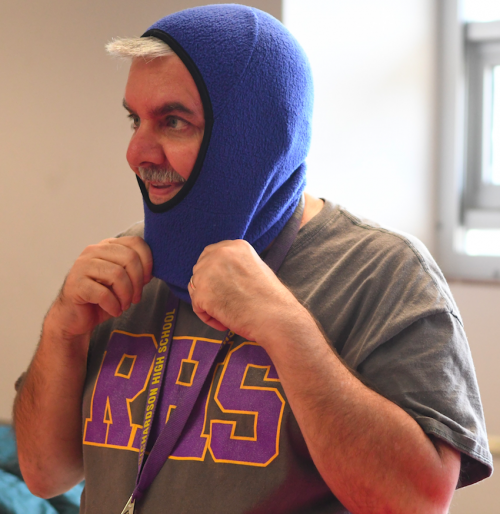
So, how did the competitors do? I will let you be the judge!
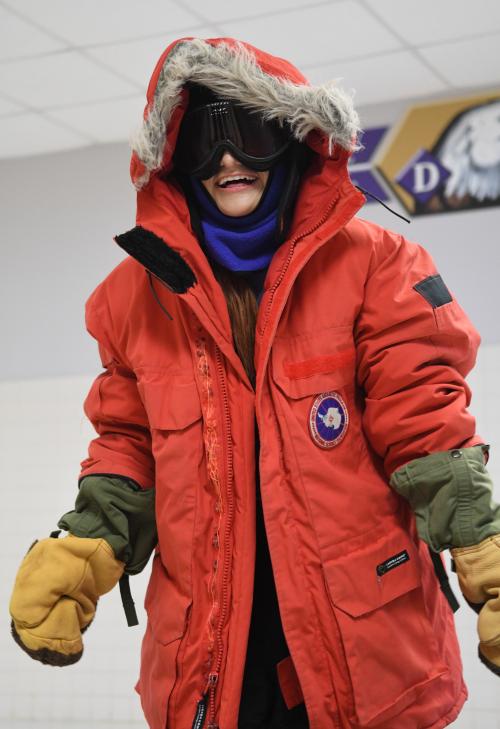
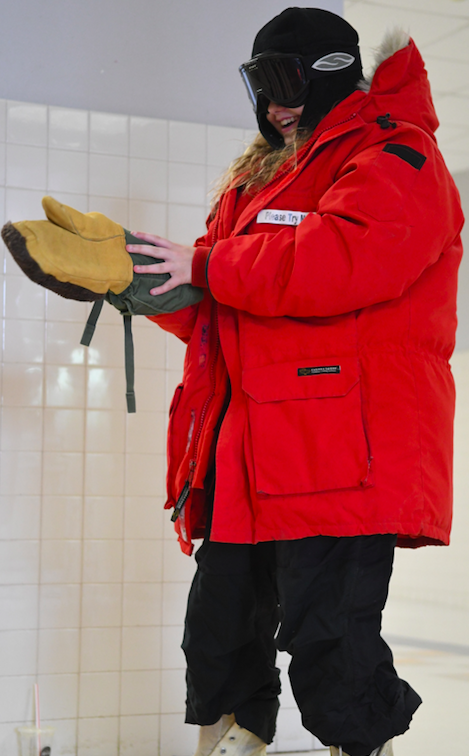
The second event of Polar-ympics was entitled, Nighty-Nite Expedite. The challenge seemed simple enough – to unzip a sleeping bag, get inside the sleeping bag, and then zip it back up. However, this had to be accomplished with all of their ECW(abbreviation) Extreme Cold Weather clothing gear on – including the gloves. As you can see from the photos, the competitors didn’t exactly get the sleeping bag zipped up all the way, but they were able to open it up, get in and have fun along the way!
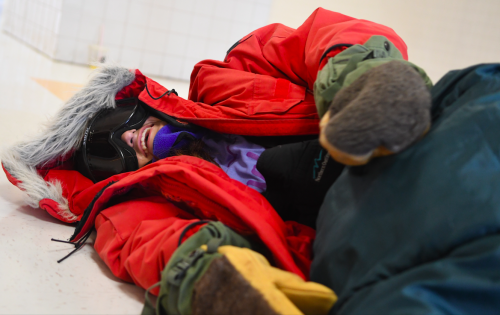
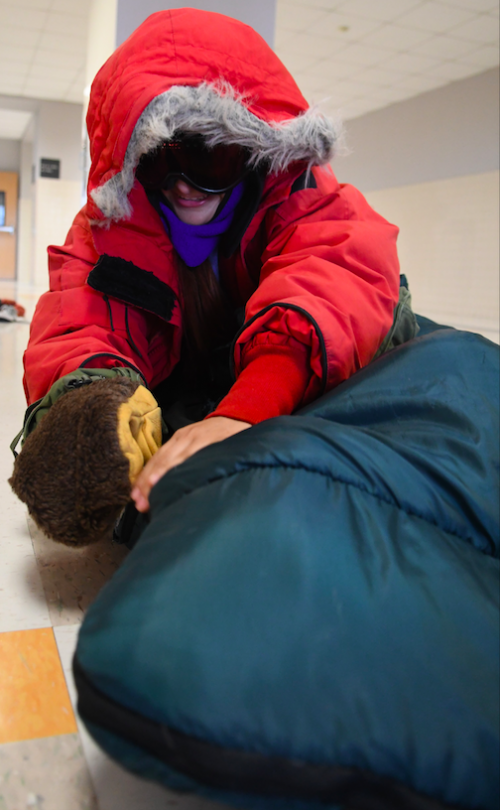
No Place Like Igloo was the name of the third event. The researchers had been out in the field all day and they were getting tired. However, they realized that they left the tents at base (an honest freshman mistake) and they would need shelter. One of the researchers in the team accidentally twisted her ankle and was subsequently incapacitated so it was up to the competitor to create a shelter for her fellow researcher. A pile of ice blocks was spotted about 20 yards away so the competitor would trek to the pile, retrieve the blocks and then bring them back to start constructing an igloo. Of course, the ice blocks were really empty boxes wrapped in white butcher paper but, because they were supposed to be ice blocks and blocks are heavy, the competitor could only retrieve one block at a time and return it to home base, all while wearing their ECW(abbreviation) Extreme Cold Weather clothing gear. The igloo was to be constructed such that it totally enclosed the injured researcher but the design was totally up to the competitor. The final structure wasn’t totally enclosed but it was a great effort!
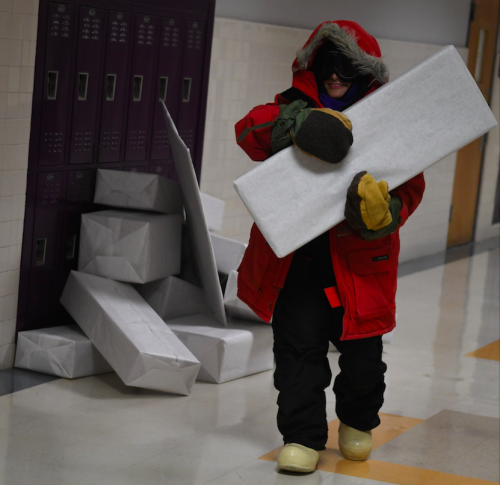
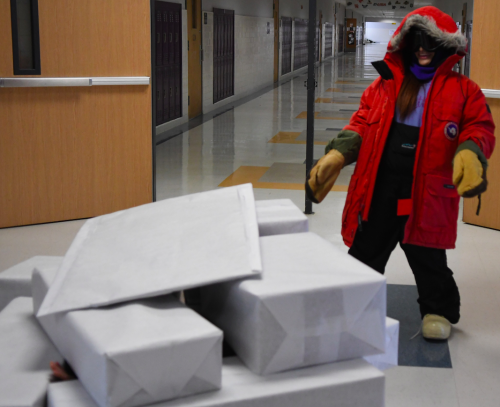
The final event was Ice rescue – STAT. The researchers are out in the field and they come across an injured party who needs to be rescued. Their snowmobile ran out of gas so they had to transport a makeshift sled to the injured party, place them on the sled, and then return them to base camp, without the injured party falling off the sled. Who was the injured party that each competitor had to transport? The answer is in the photo. It was one of the two individuals pictured in the photo. I will leave it to you to guess which one.
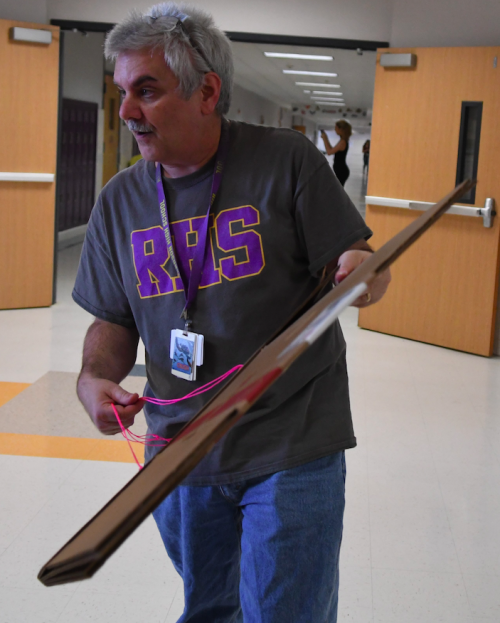

After all of the events were completed, who was the winner and what did they get? While it is true that there was one competitor who completed the tasks in the shortest time, it turns out that they were both winners. They had a great time and learned a little about polar science along the way. What prize did they get? Nothing yet – but who knows, there may be a pizza party in their near future!
Coming Up Next: This expedition has provided me with a host of ideas for classroom activities, but not just for high school students. The next blog will describe a project designed for elementary students.


Comments